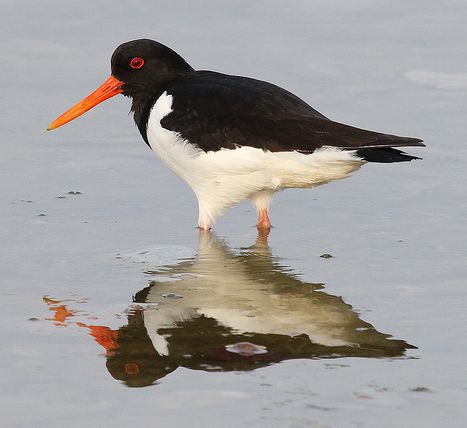Oystercatcher

Oystercatcher
NL: Scholekster
D: Austernfischer
F: Huitrier pie
Latin name: Haematopus ostralegus (Linnaeus, 1758)
Bird group: Oystercatchers

Sound: Loudly shout ‘tepiet’ and ‘peak peak’. Whistling song as call, ending in trill.
Field characteristics: 43 cm. Large, variegated, black and white wader with a long orange bill and pink legs. Head, chest, back and wings glossy black; broad white wing stripe; parts and rump white, tail white with broad black terminal band. In winter plumage with white throat band. Juvenile as adult but upperparts brownish black, bill dirty orange and white throat band.
Appearance: Common resident and migrant. Generally on seacoasts in various habitats, but also inland in meadows and fields.
Food: Drills for shellfish (especially mussel, cockle, nun). Shells are opened with the beak, by breaking the sphincter muscle of the shell. Also eat crabs, worms and to a lesser extent insects and eggs.
Nest: The breeding season runs from mid-April to July. The oystercatcher usually lays three, sometimes four eggs in a nest made in a shallow hole. The eggs are on average 57 x 40 mm in size. The oystercatcher usually breeds on grassland, but many nests are also found on arable land. They also make nests on the flat, gravel-covered roofs of larger buildings, where there is no danger from ground predators such as fox and ermine. The eggs hatch after 25 to 27 days of incubation. The young are then fed by the parents for a while, in contrast to most other meadow birds.
Song/call:

